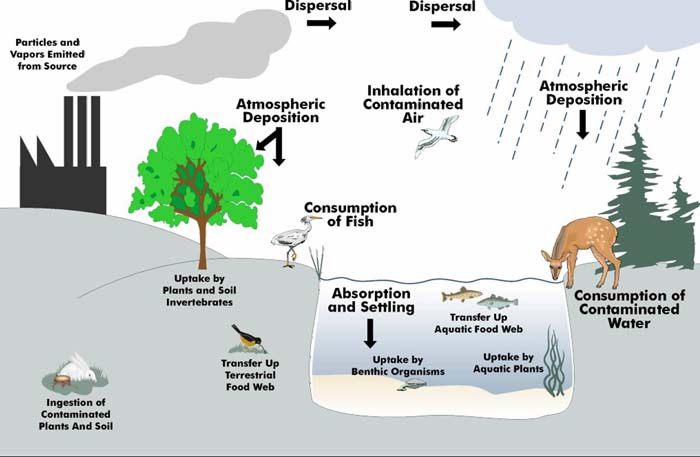EPA Issues New Air Dispersion Modelling Guidance

The EPA has published an update to the Air Dispersion Modelling from Industrial Installations Guidance Note (AG4). The original version of this guidance note was published in 2010. The main changes to the guidance are as follows:
- There has been a revision of multiple sections to reflect updates in guidance from relevant authorities;
- The list of available metereorological stations has been updated;
- It is now required that any contractors carrying out air emission monitoring must be ISO17025 accredited for the data to be used as source data for modelling;
- The standards and guideline values for air quality have been updated to include a greater number of pollutants and updated environmental assessment levels;
- Ecosystem deposition impacts have been included in an appendix to the guidance;
- CALPUFF comments have been amended to reflect the current USEPA guidance;
- The guidance on modelling reporting requirements have been amended;
- The guidance on odour impacts have been updated to reflect the contents of AG9;
- Guidance on modelling of emergency generators and similar facilities has been added as an appendix;
- There has been updates to the ADMS and AERMOD models since the previous guidance; ADMS 4 has been updated to ADMS 5 and AERMOD 09292 has been updated to AERMOD 19191. Models are constantly being developed, therefore the relevant websites should be checked regularly for the most recent model;
- There has been no change to the Ambient Air Quality standards.
The guidance outlines general principles and suitable methods for air dispersion modelling which can then be used to assess and report on the effect of air emissions from EPA licensed facilities. The guidance is aimed at practitioners of Air Dispersion Modelling (ADM). ADM is used to assess the air quality of an emission source within a defined modelling domain by performing a mathematical approximation of dispersion and estimating ambient pollutant concentrations at a given location rather than replicating atmospheric processes in detail. The guidance note has several aims as follows:
- To outline a set of minimum standards which should be adhered to when carrying out an ADM assessment;
- To provide a best practice guide for modellers;
- To ensure that modelling studies are undertaken with satisfactory accuracy and reliability and that the report details the methodology and results clearly;
- To ensure that assessments are conservative, to prioritise the protection of human health and the environment;
- To ensure there is a sound scientific basis to the methodology;
- To ensure there is a consistent procedure for choosing screening versus advanced methods;
- To identify a consistent methodology that may be used by the modeller to select the most appropriate advanced air dispersion model;
- To ensure that the risk of adverse effects from an installation is consistent with the complexity of the ADM assessment;
- To ensure that there is sufficient consistency in the model application and scope that the assessments are of uniform quality and, therefore, professional differences are minimal;
- To reduce errors in model set-up, application, interpretation and reporting.
The guidance note also includes the following:
- A short discussion on the theory of ADM;
- The applications and benefits of ADM;
- A short discussion on the most commonly used screening and advanced models;
- A suitable approach to the model selection process;
- Technical topics in dispersion models which warrant attention including meteorology, land use, terrain, building downwash, deposition and cumulative assessments;
- Reporting requirements;
- A checklist for the carrying out of an ADM assessment.
The guidance outlines the initial steps for carrying out an ADM assessment, including whether it is required in the first place. It may be the case that an emission point can be proved to be insignificant and does not require ADM.
An ADM assessment utilises the following data in the process:
- Source information including the emission rate, exit temperature, volume flow, exit velocity, etc.;
- Site information including site building layout, terrain information and land use data;
- Meteorological data including wind speed, wind direction, temperature and cloud cover;
- Receptor information including locations using discrete and/or gridded receptors.
The inputs to an ADM tool depend on the complexity of the model used. Screening models such as ADMS-Screen and AERSCREEN may only require a few inputs whereas more complex models (AERMOD, AERMET Meteorological Pre-Processor, ADMS 5 and CALPUFF) require a large number of inputs. The result of inputting this data into the tool is an estimation of the dispersion of pollutants between the source and the receptor by using various algorithms. The output from the model is a predicted time-averaged concentration at the receptor. The resulting predicted concentrations are combined with relevant background concentrations and compared with the relevant ambient air quality standard or guideline.
The methodologies outlined in the guidance should be taken as best practice and are necessary to ensure that the assessments meet the desired level of accuracy and are of a uniform standard. Practical issues with ADM include selecting a choice of model, the selection of representative meteorological data and approaches to incorporating background concentrations into the assessment.
The guidance recommends that if there is any uncertainty surrounding the appropriateness of any part of the ADM assessment, the EPA should be consulted to discuss the model selection process and the approach used before carrying out the assessment.
To read the guidance in full click here.
March 2020
